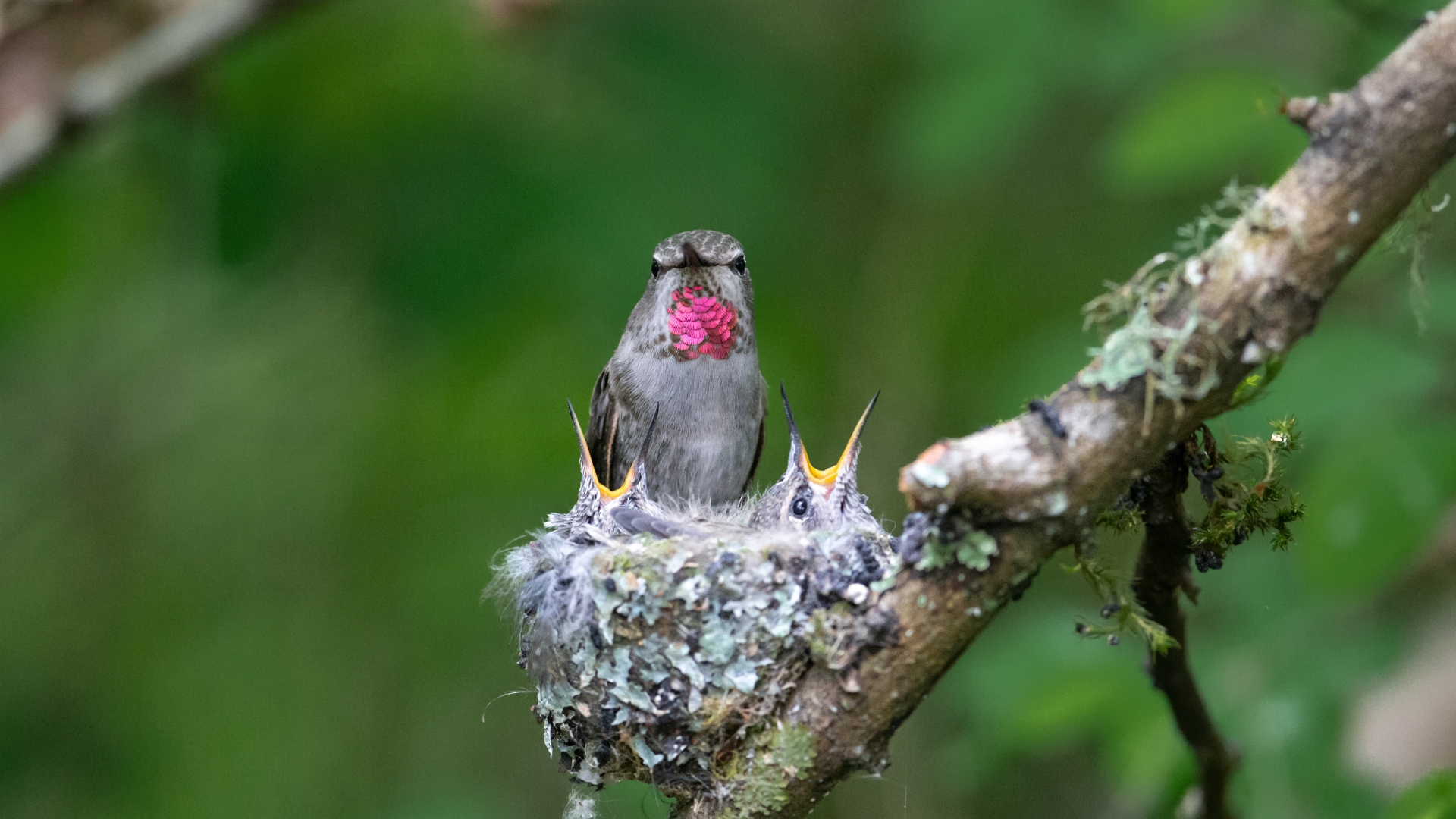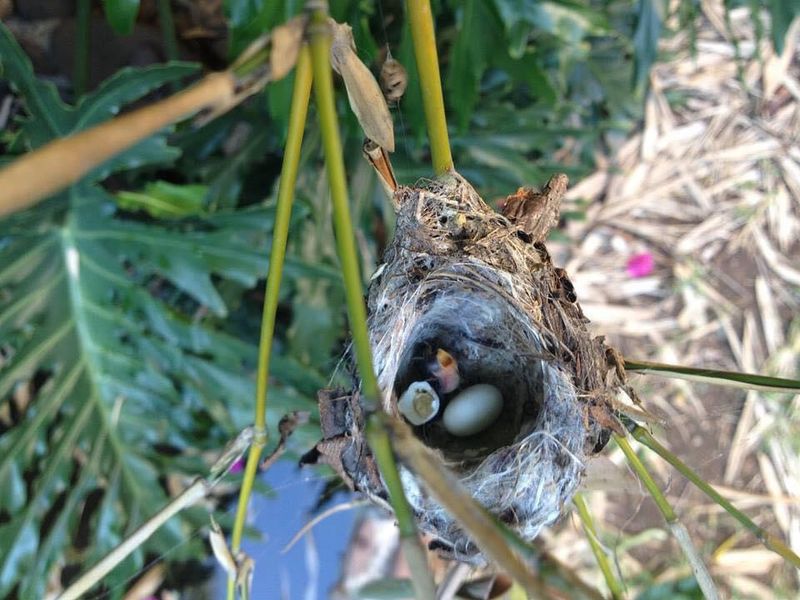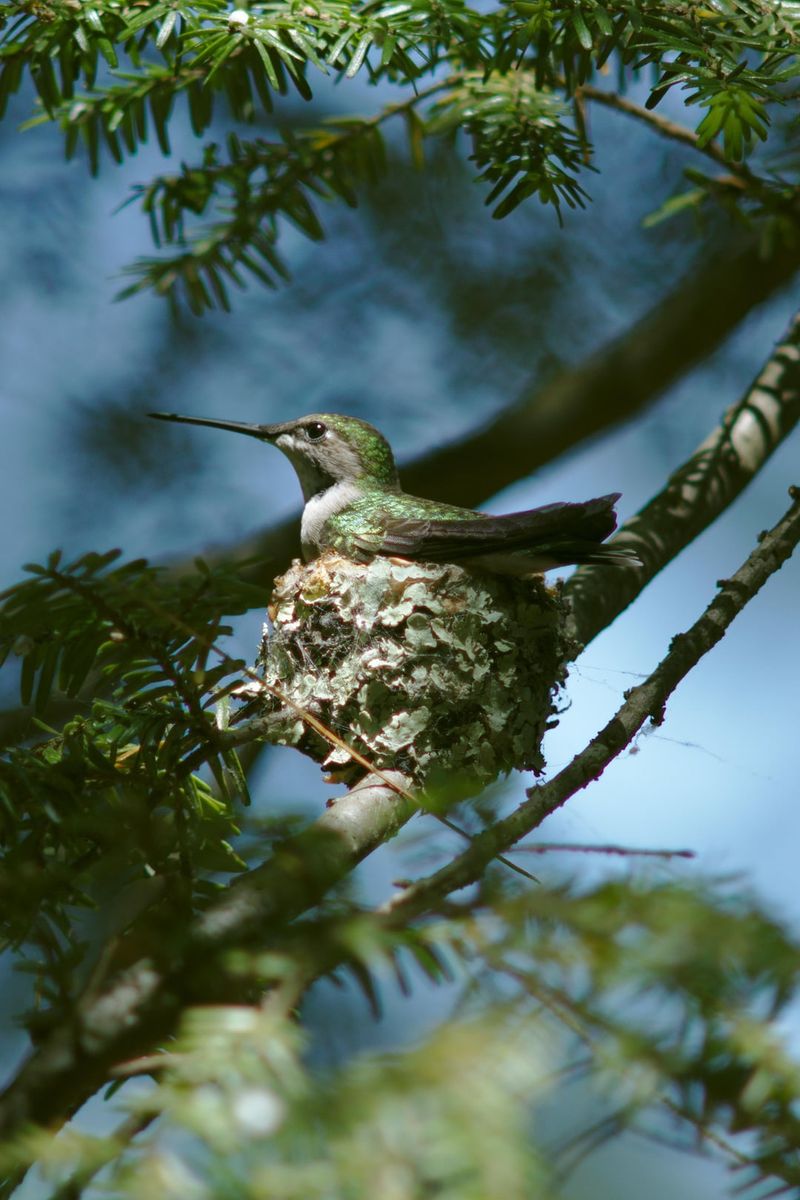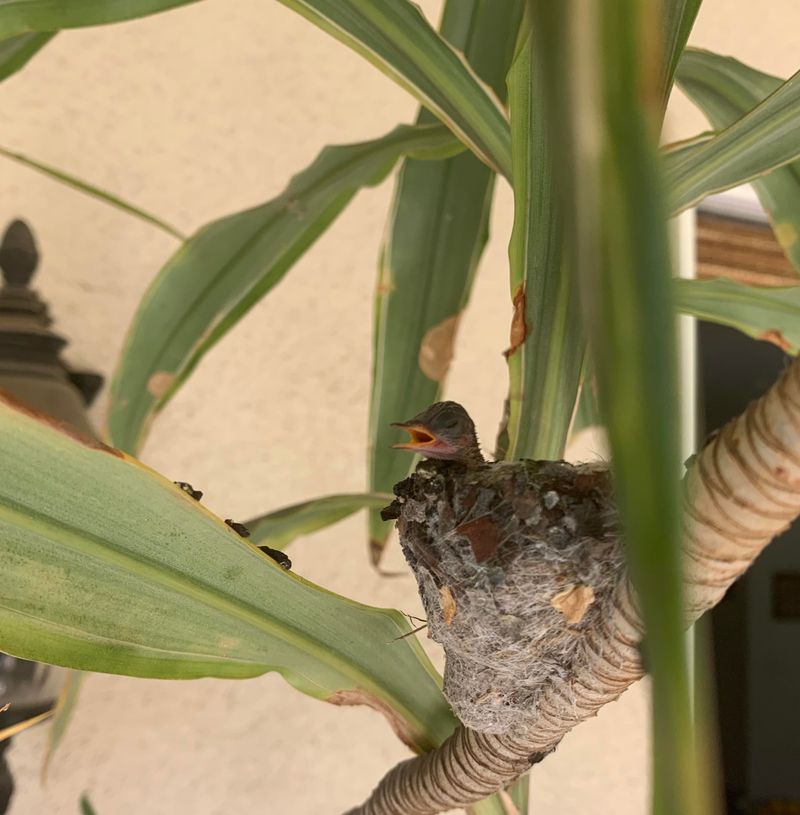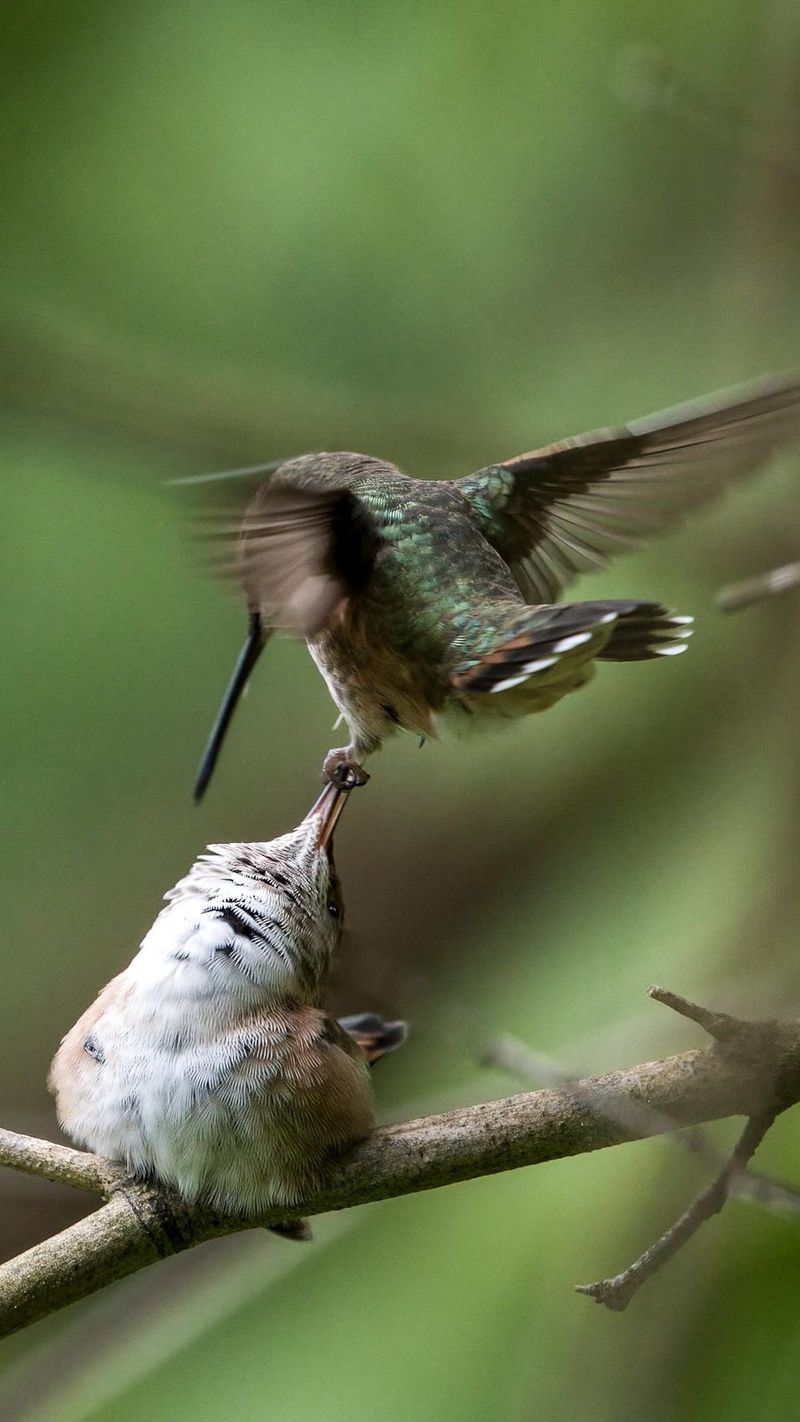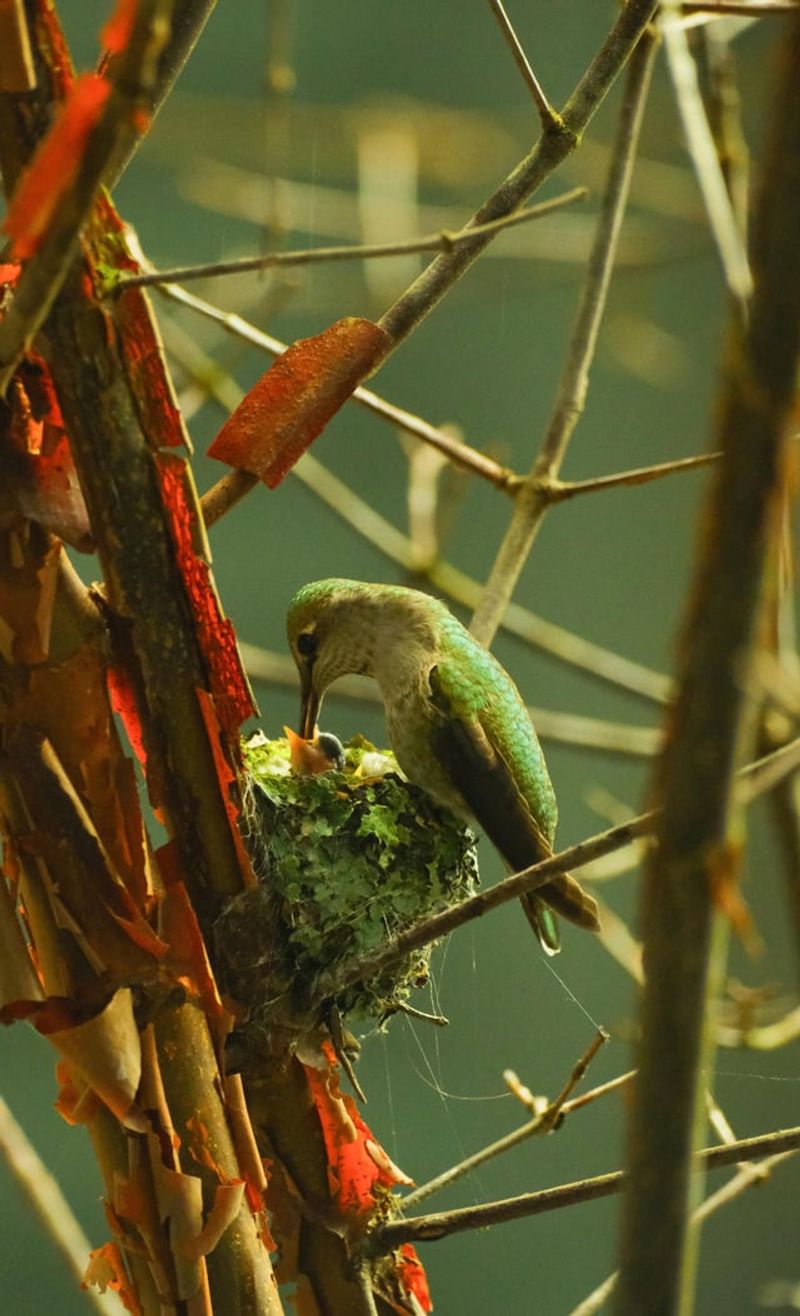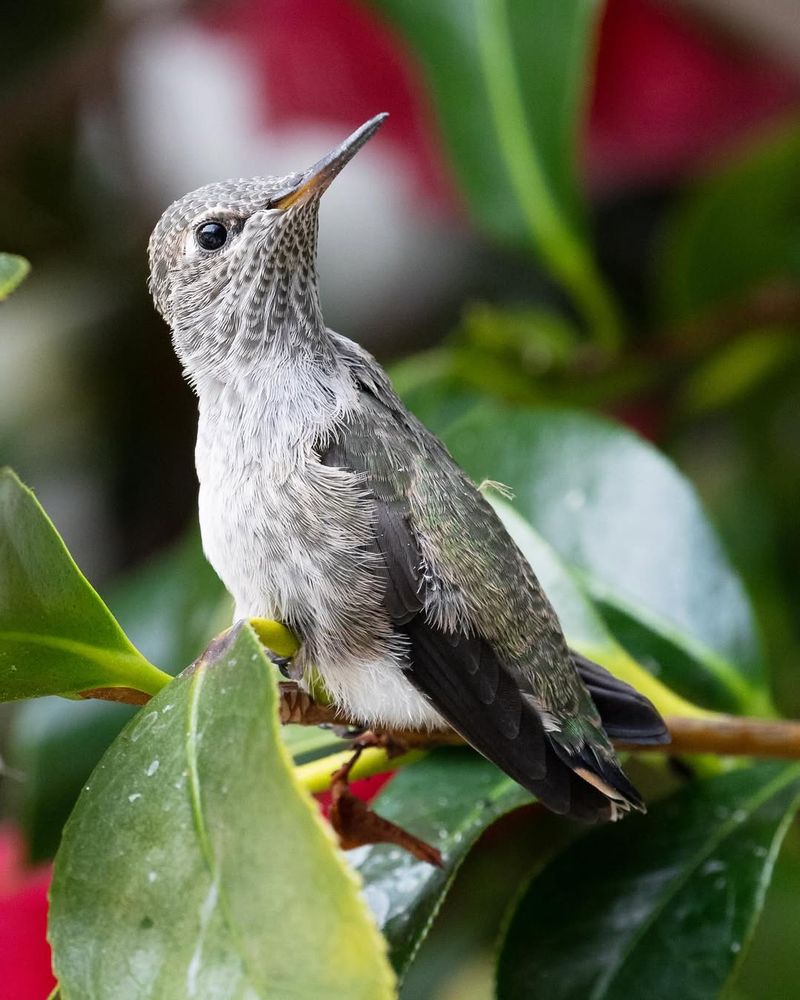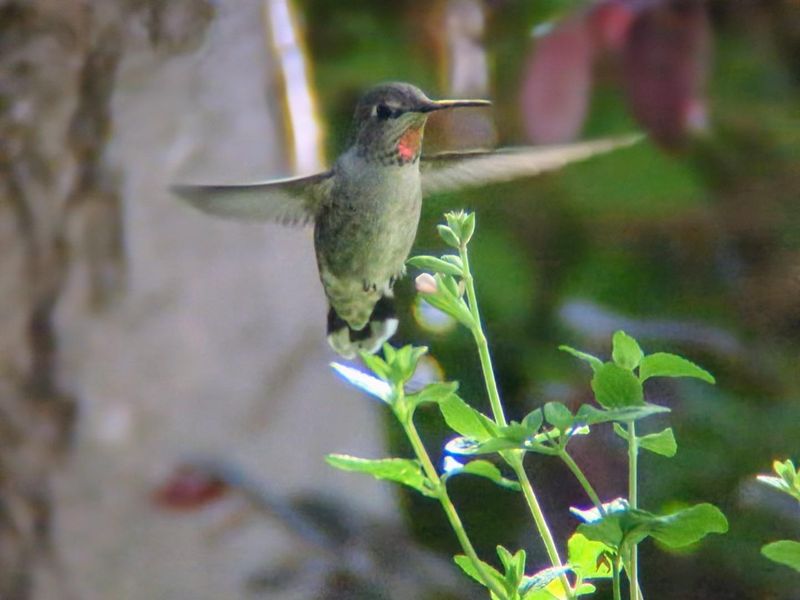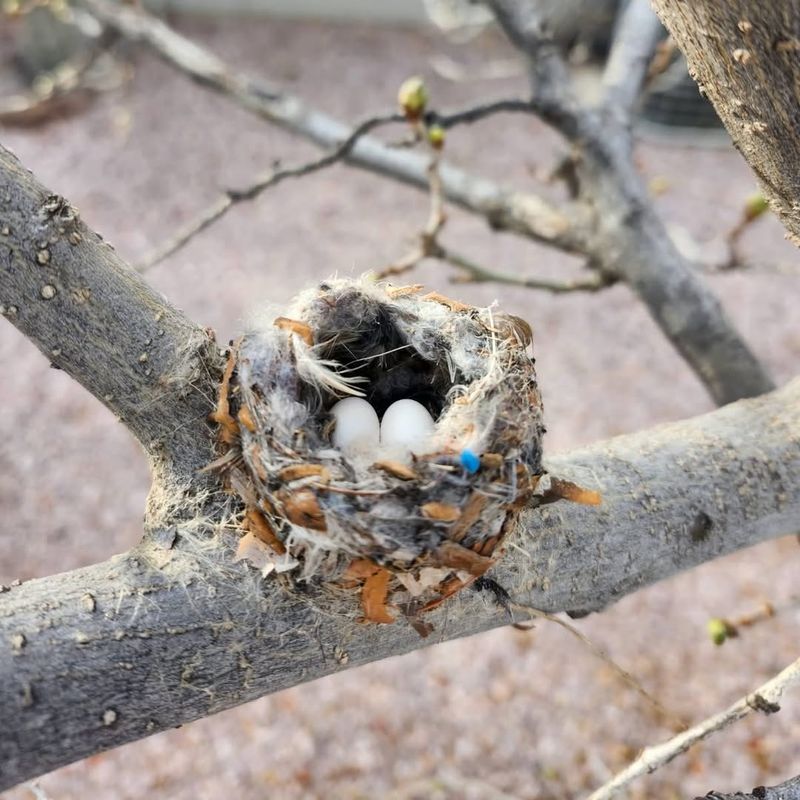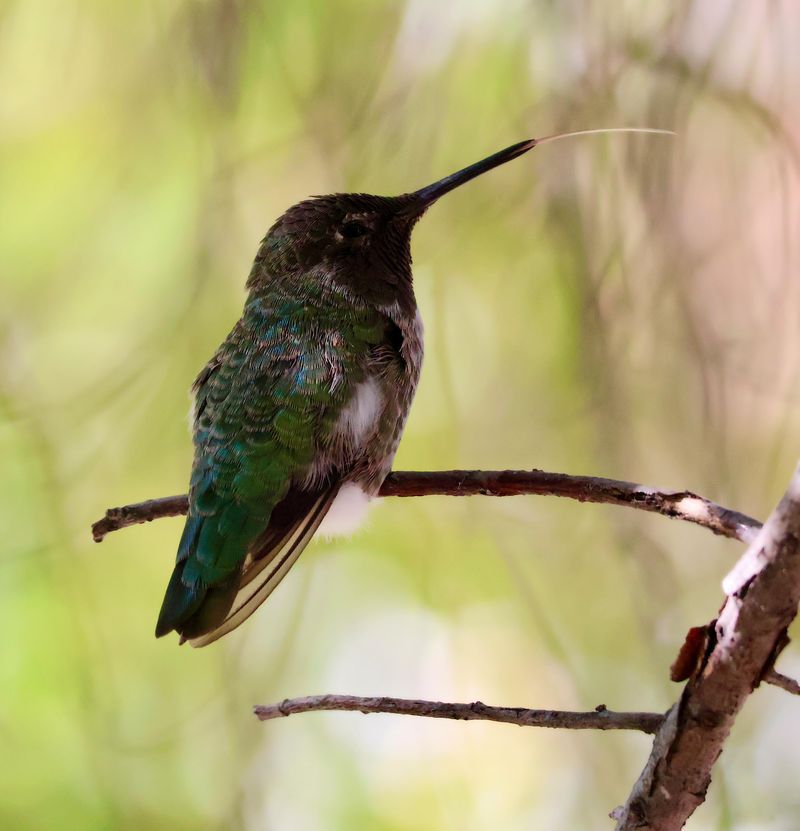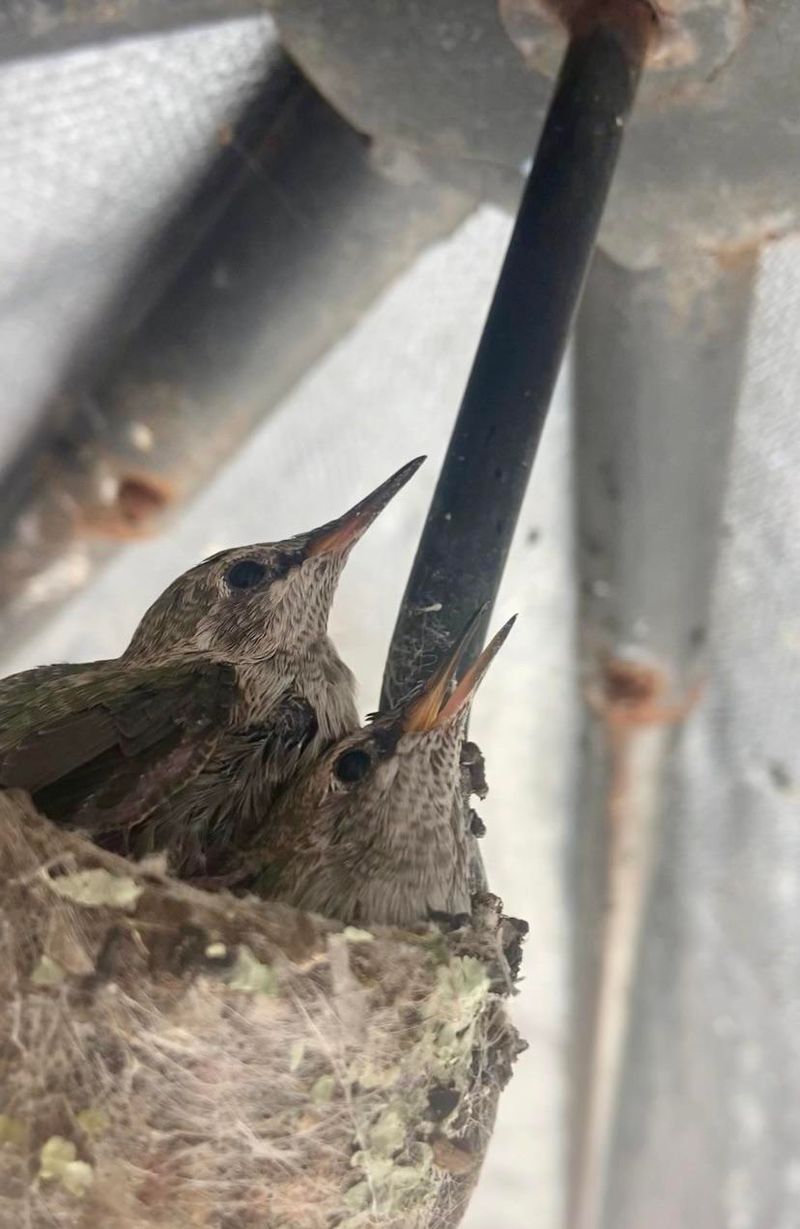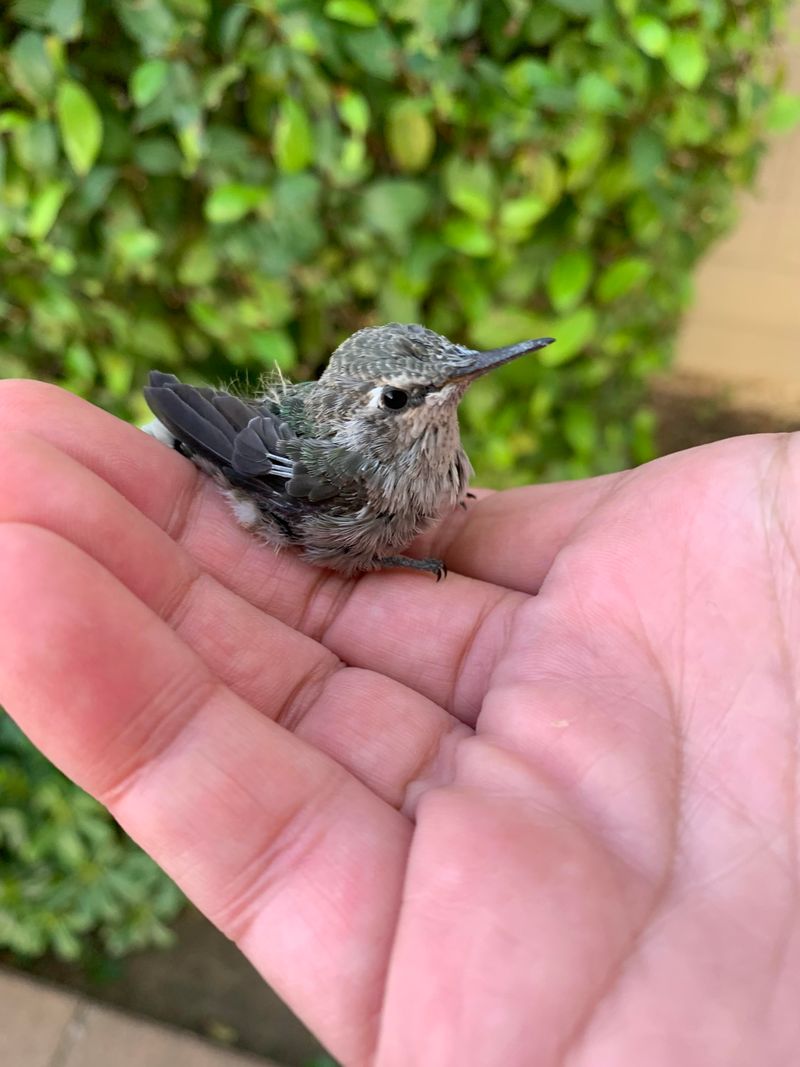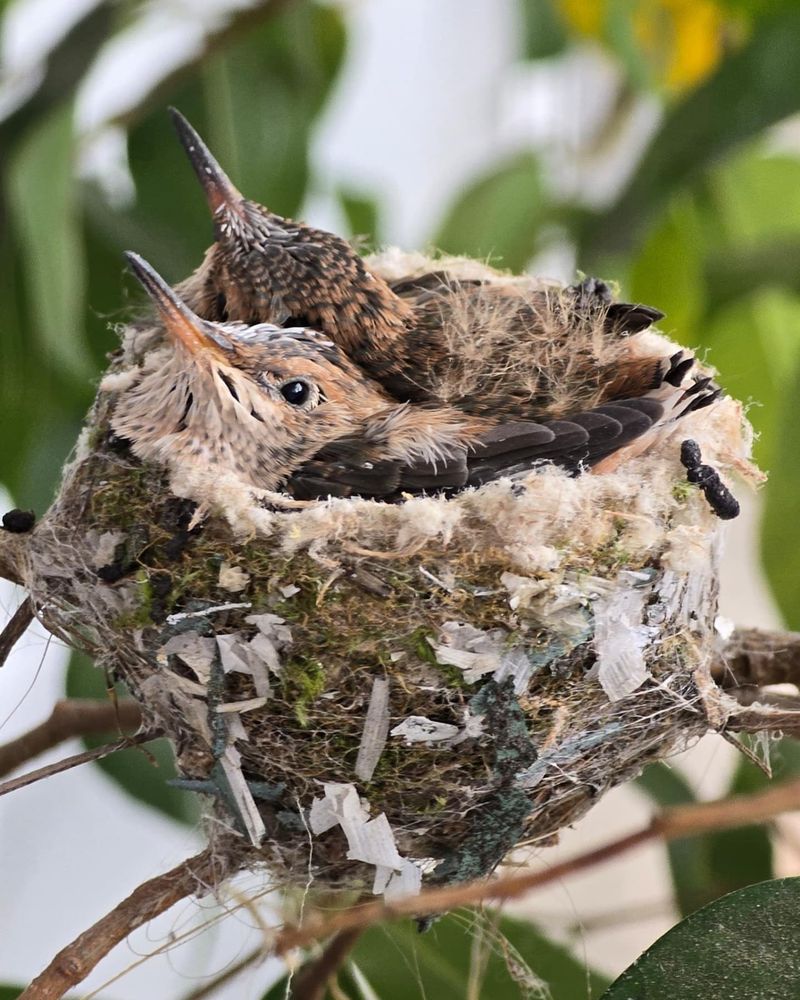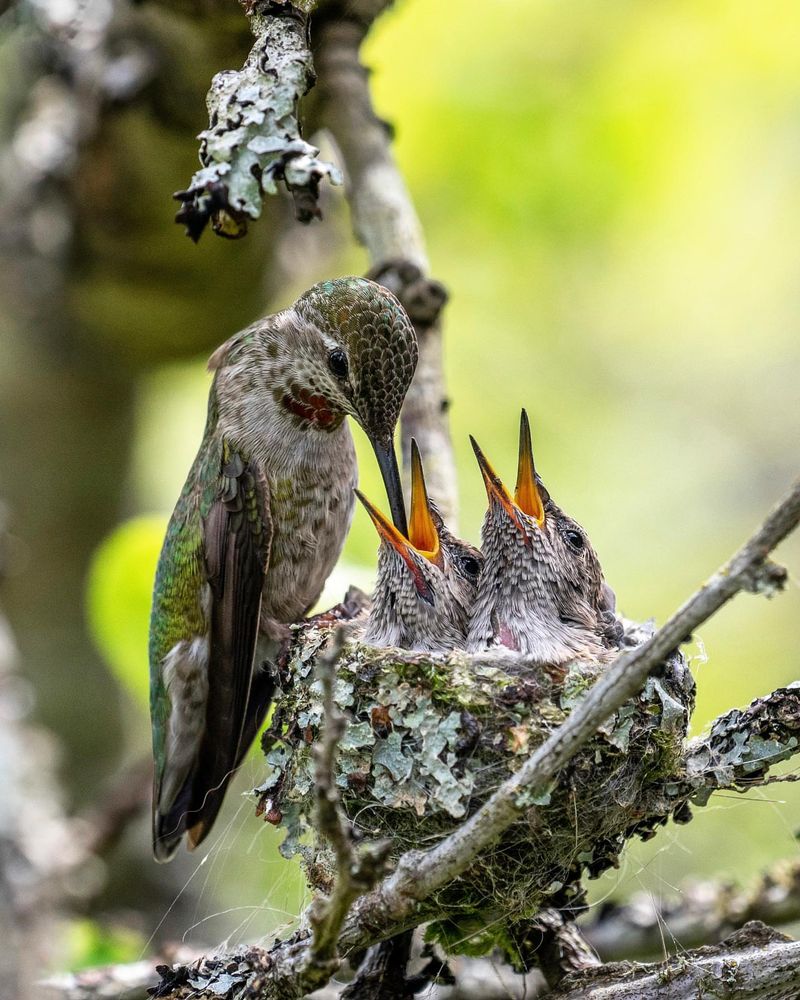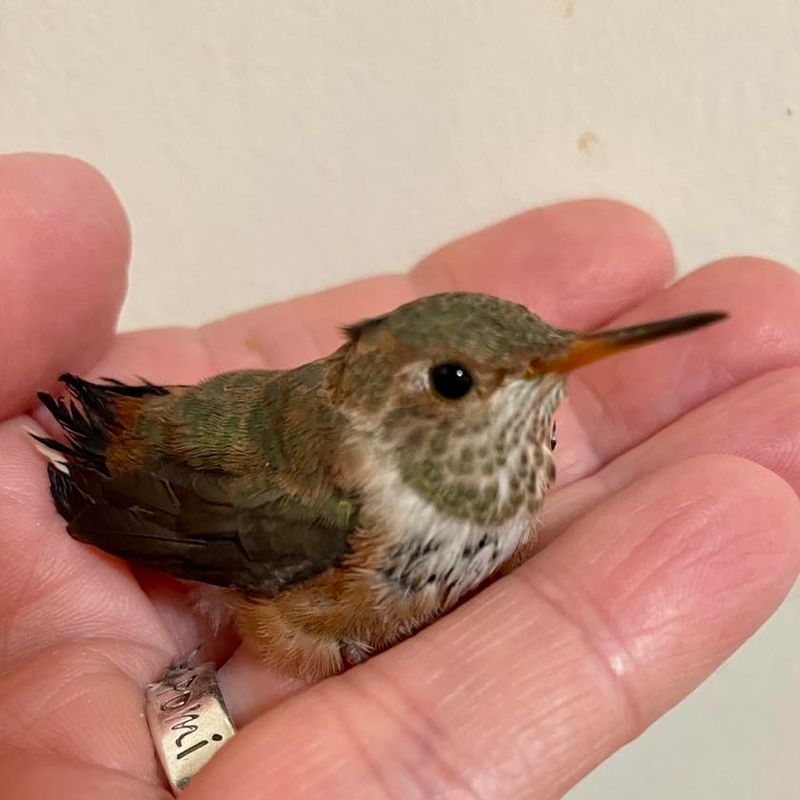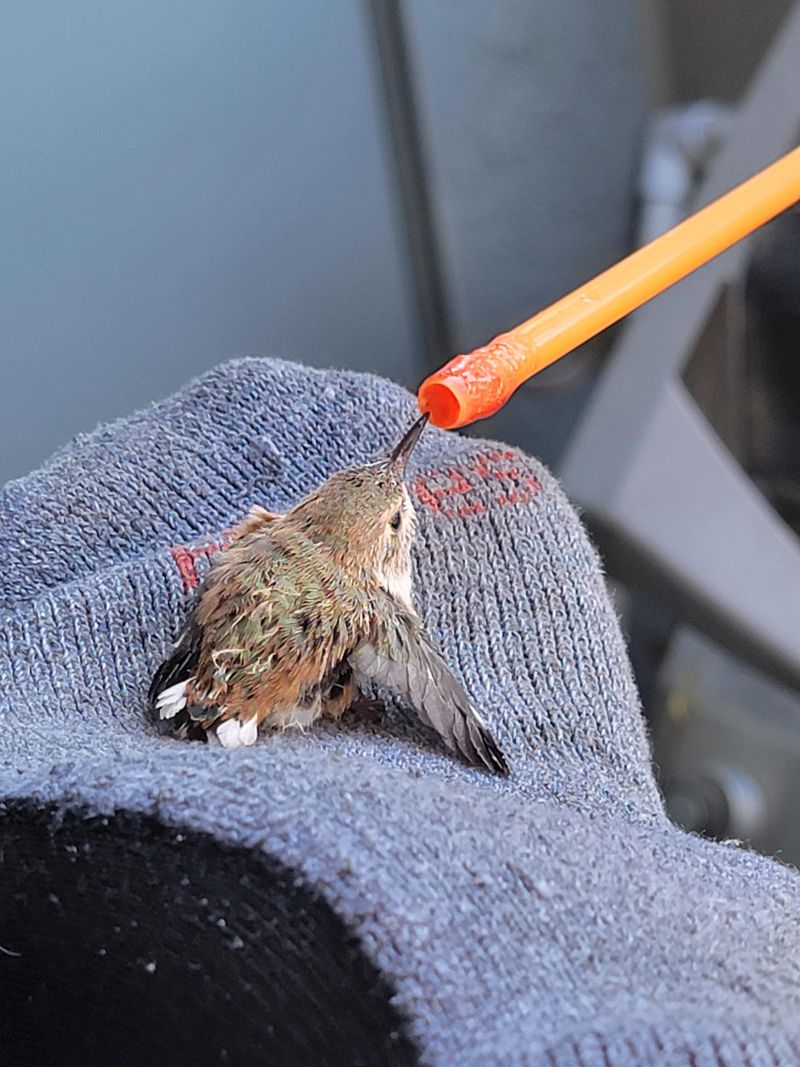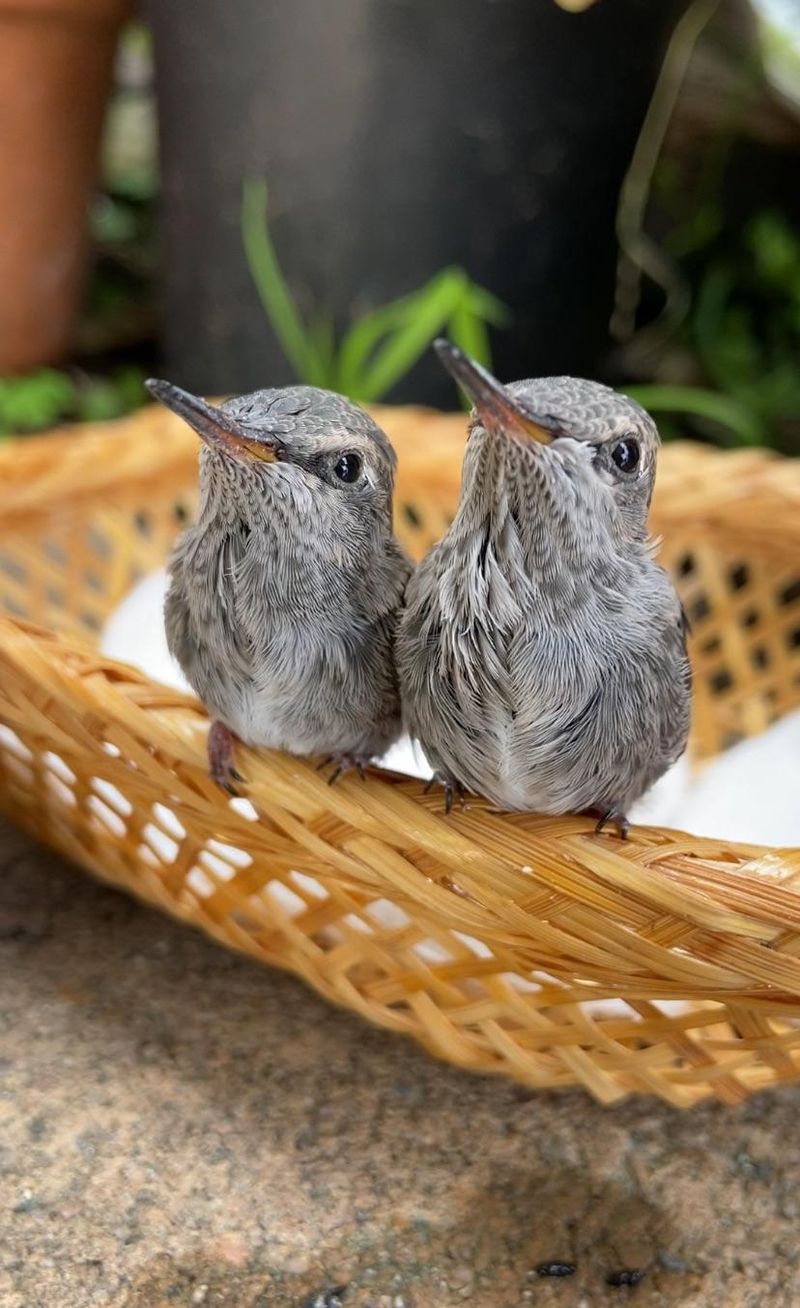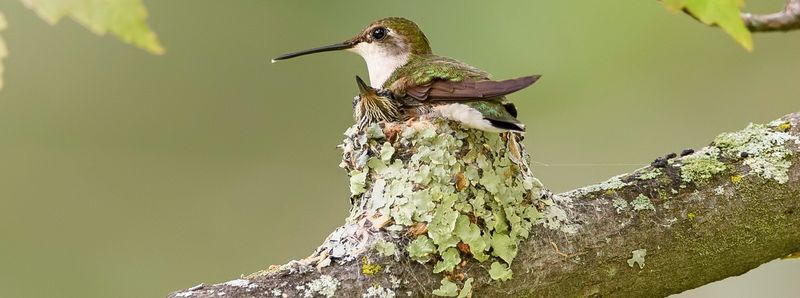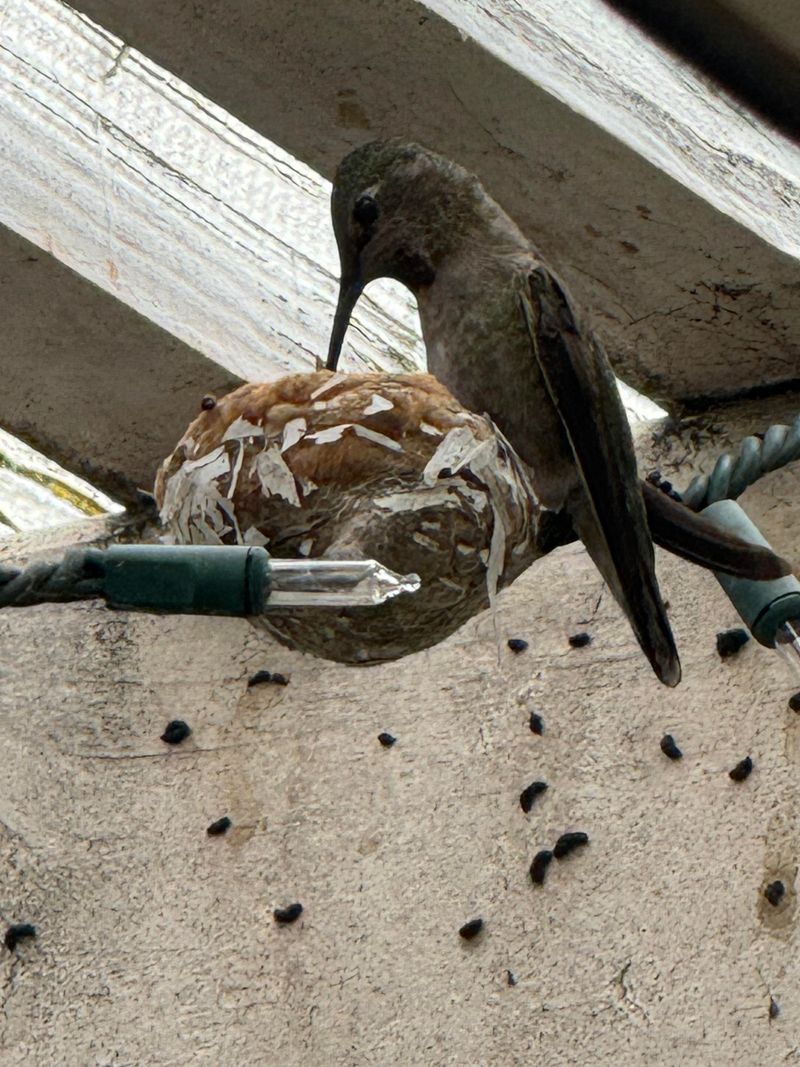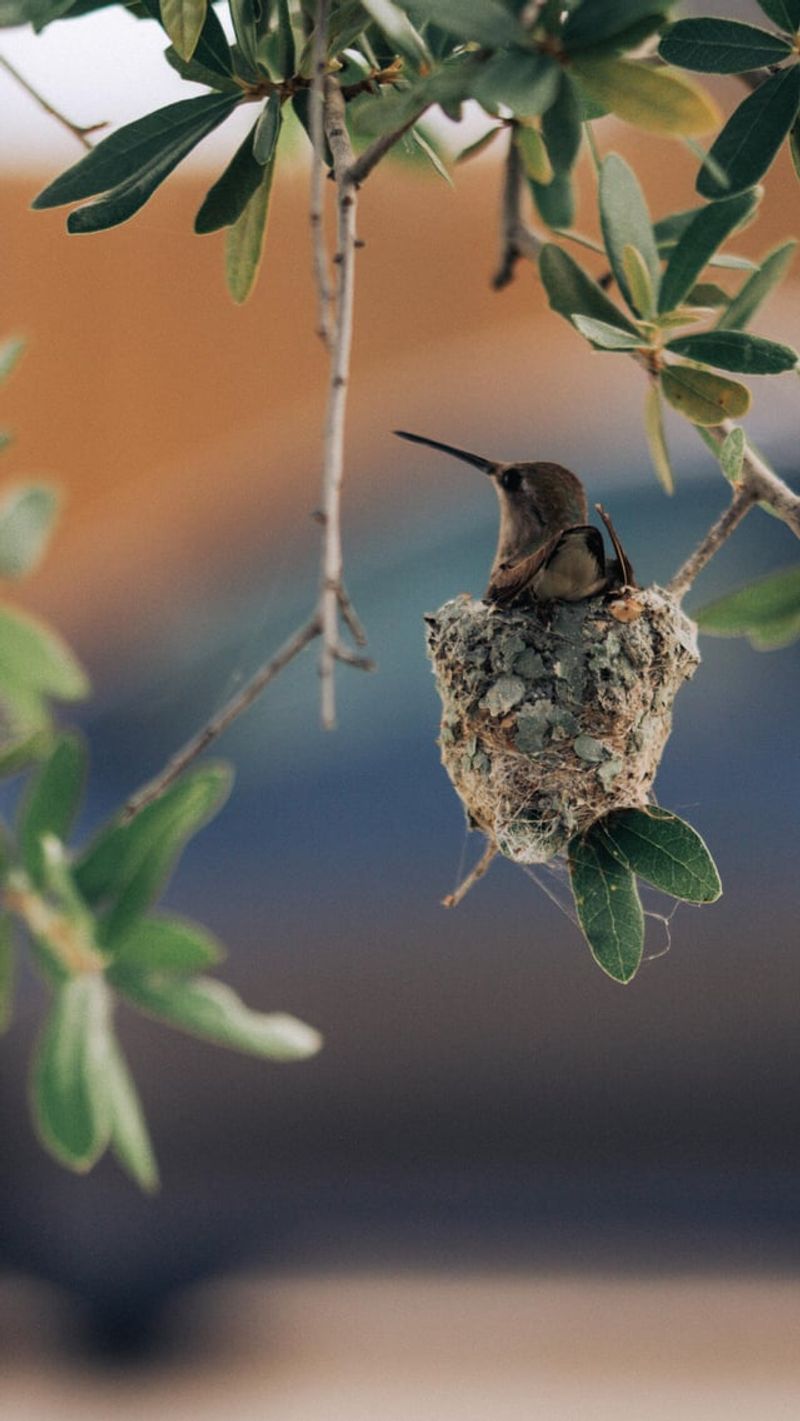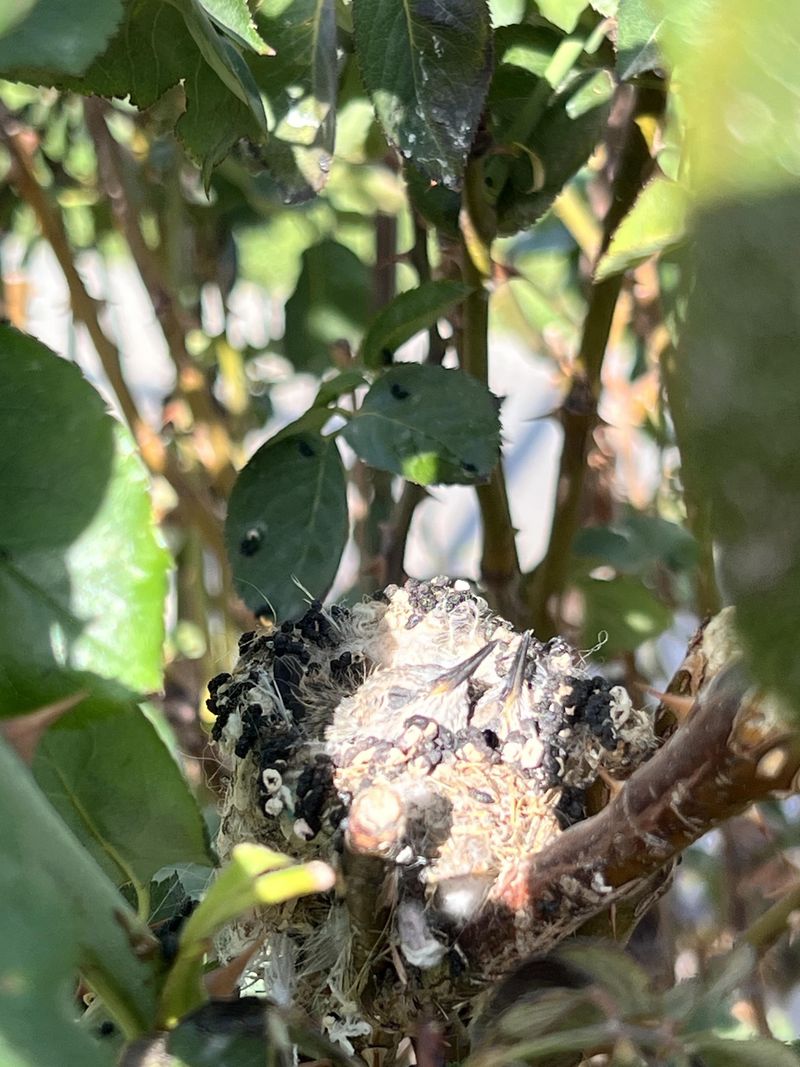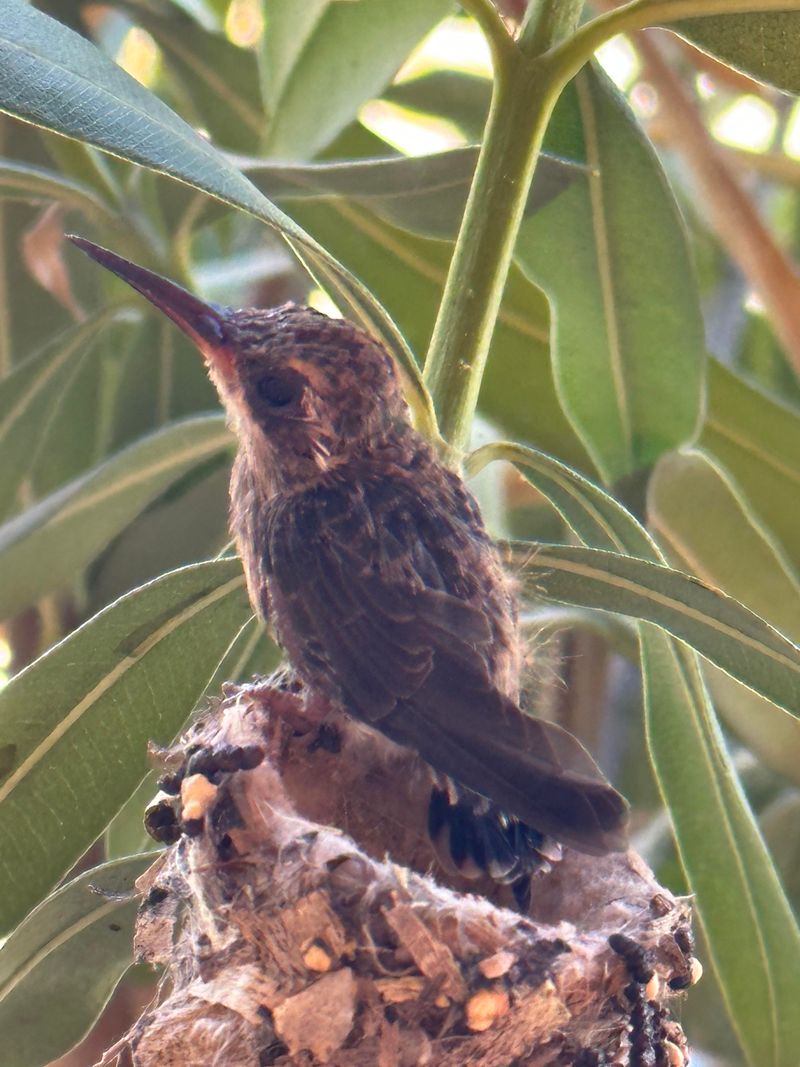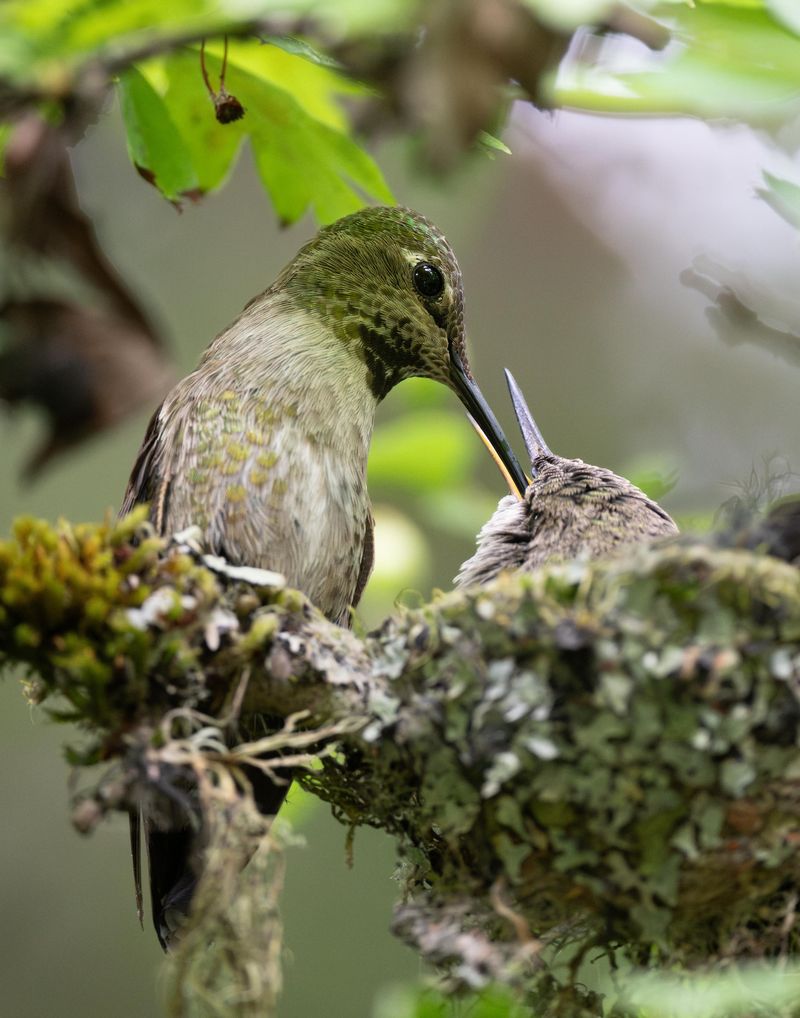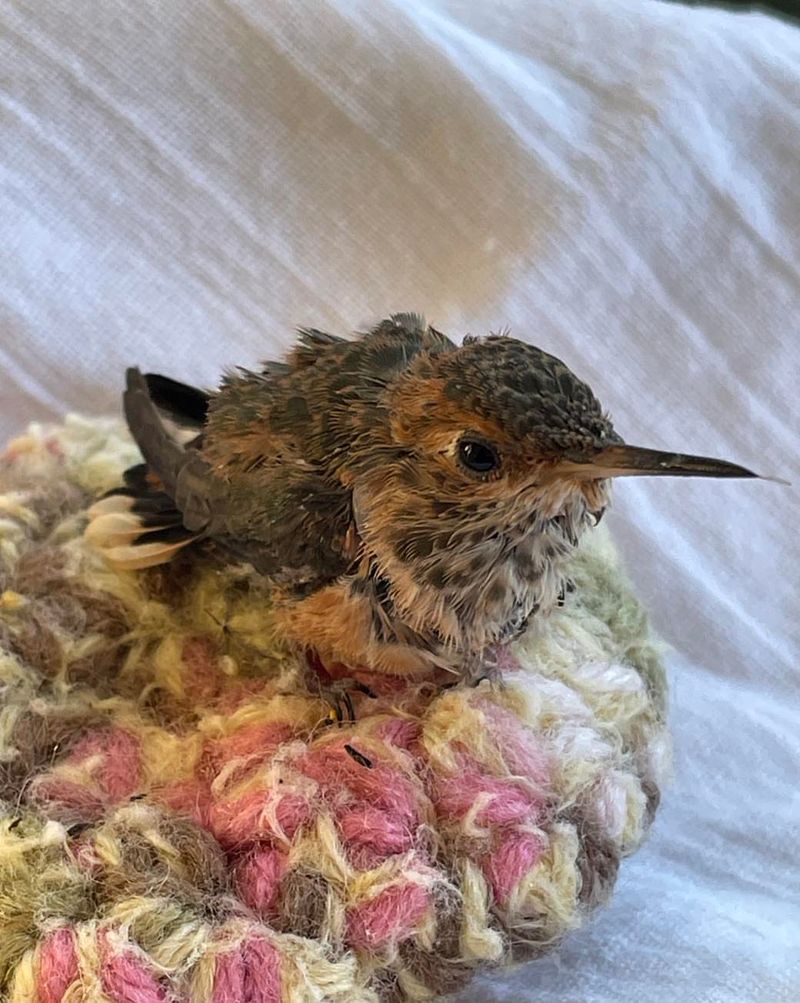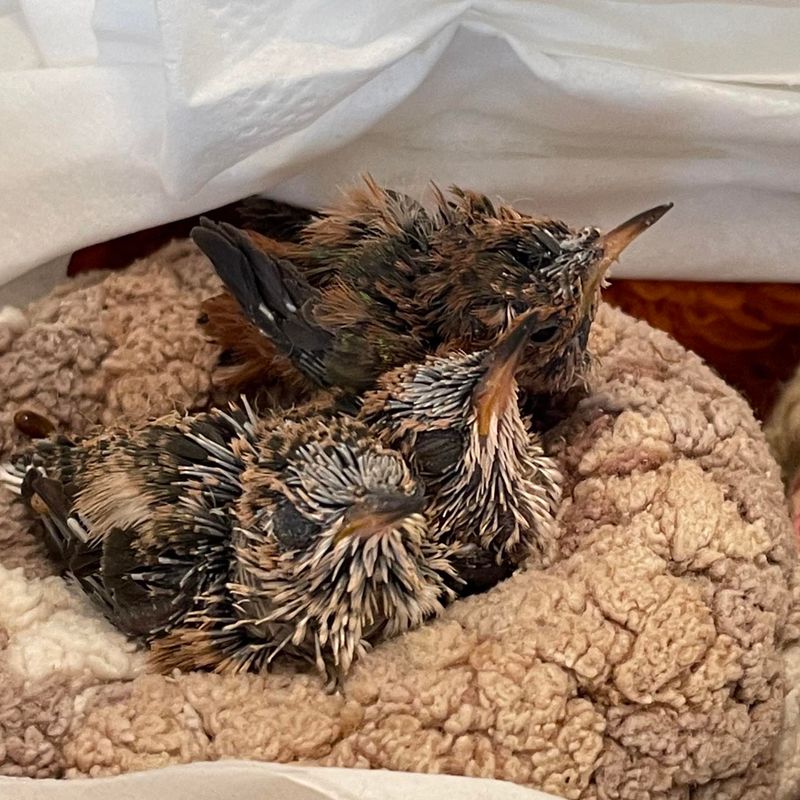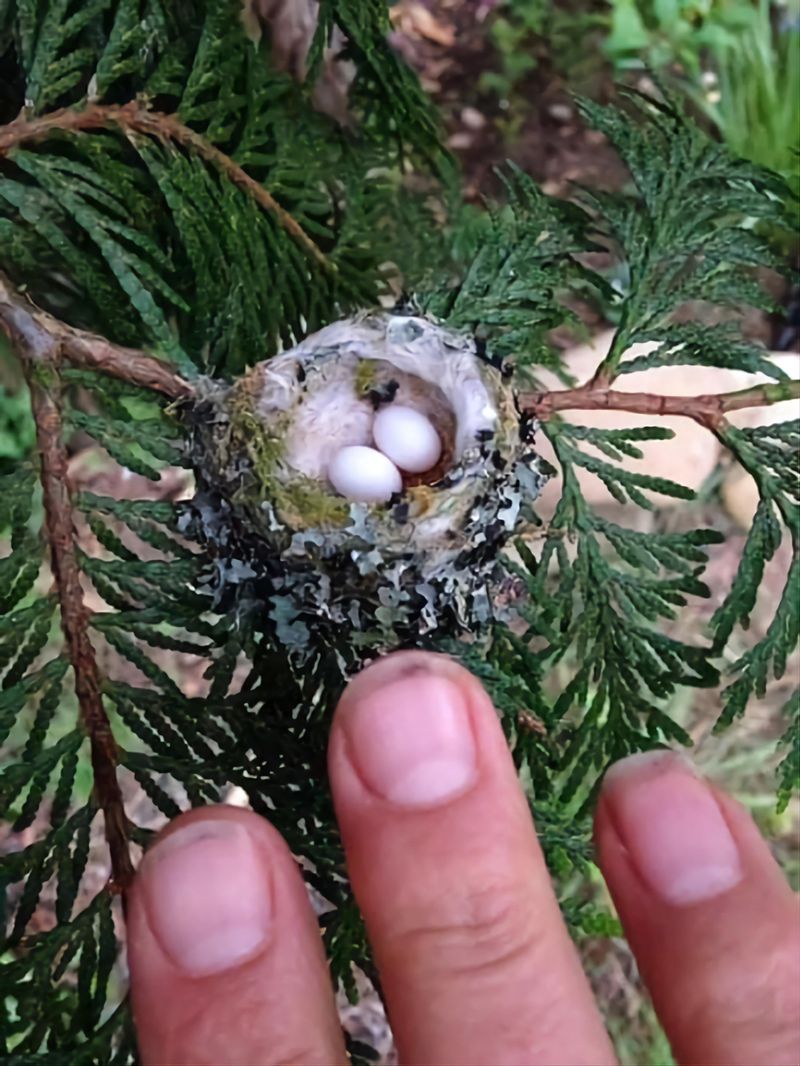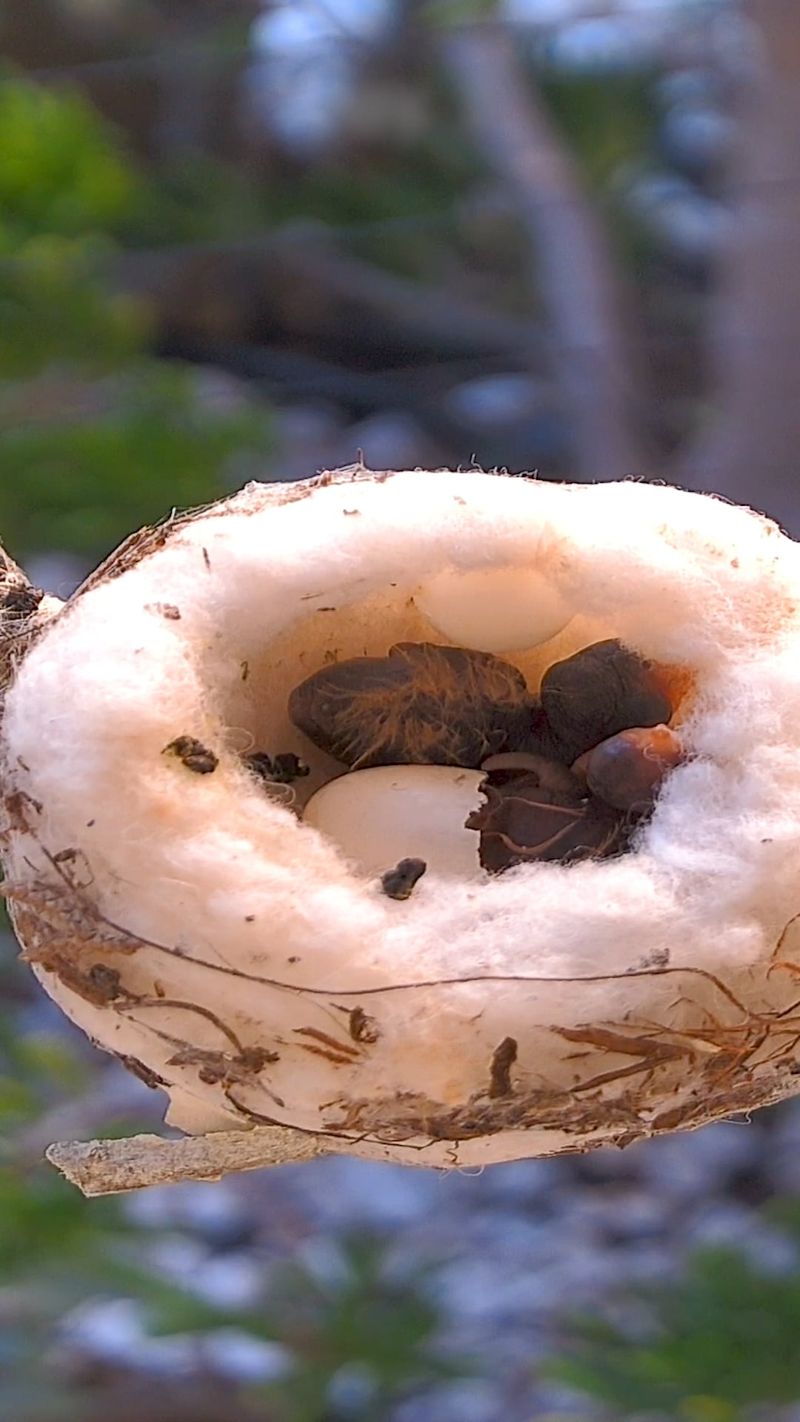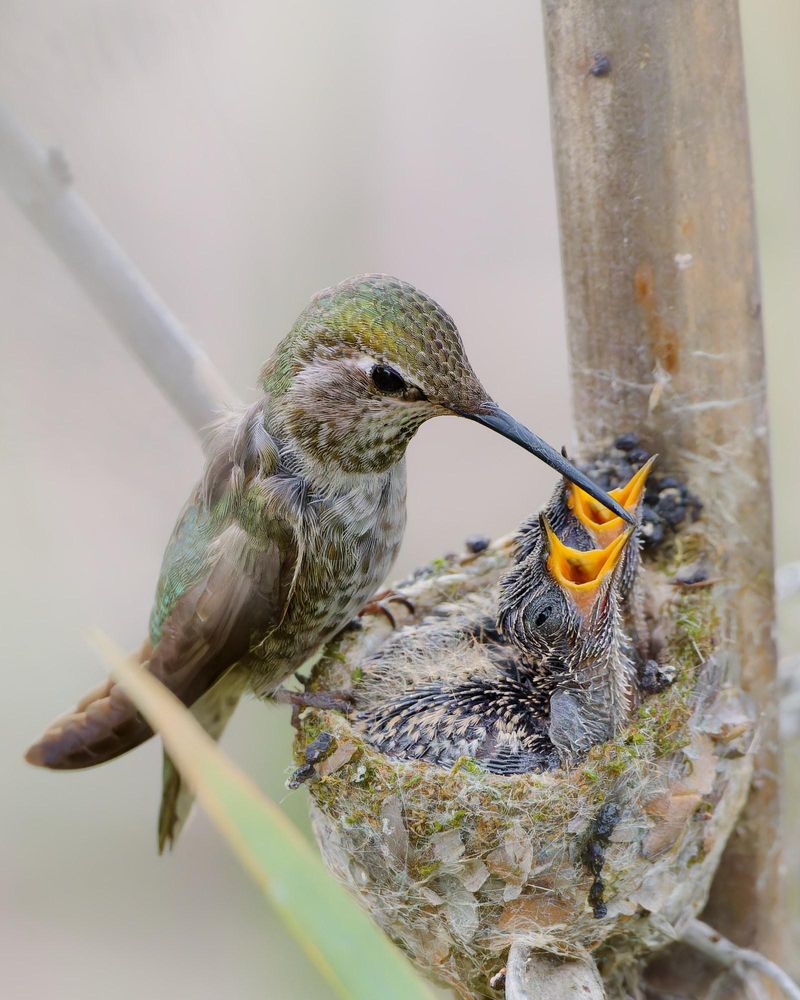Baby hummingbirds are a true wonder of nature, but spotting them can be a real challenge! I’ve spent countless hours trying to catch a glimpse, and let me tell you, they can be surprisingly elusive.
With their tiny size and quick movements, these little guys know how to stay hidden. But understanding why they’re so tough to find can help you become a pro at spotting them.
Let’s uncover the secrets behind these mysterious little birds and what you need to know to spot them next time!
1. Tiny Size Makes Them Nearly Invisible
Baby hummingbirds are incredibly small—almost too small to see! Their size makes them blend into their surroundings, hiding in the most unexpected places.
Imagine the tiniest bird you’ve ever seen, and then shrink it even more—that’s how hard it can be to spot them. It’s like playing hide and seek with nature, and they’re winning.
2. They Stay Hidden in Nests for a While
For the first part of their lives, baby hummingbirds are tucked away in the safety of their nests, nestled high up in trees or hidden in thick shrubbery.
They don’t make a peep or stir much until they’re strong enough to leave. During this time, you can only guess they’re there based on the parent hummingbirds flying in and out.
3. They Don’t Move Much at First
Unlike their parents, who are darting around non-stop, baby hummingbirds are slow to start. They stay near their nests for the first few days or weeks, barely moving or flapping their tiny wings.
It’s a peaceful time in their lives, but one that makes spotting them nearly impossible unless you’re watching carefully.
4. Their Colors Are Hard to Detect
At first, baby hummingbirds don’t have the bright, dazzling feathers that adults do. Their colors are more muted, which helps them stay camouflaged in their natural habitats.
With feathers that blend into the greenery, they’re practically invisible unless you know exactly where to look.
5. They’re Expert Hiders
Baby hummingbirds know how to keep a low profile. They hide in thick branches, behind leaves, or in places where they’re nearly impossible to see.
This natural hiding skill is key to keeping them safe from predators. If you’re hoping to catch a glimpse, you’ll need to be patient and observant.
6. Their Nesting Sites Are Hard to Find
Finding a hummingbird nest is a challenge in itself. These nests are tiny—often no larger than a golf ball—and hidden in the highest branches of trees or within dense shrubs.
If you manage to find one, you’ll have earned the title of hummingbird detective. It’s no easy task, but spotting them in the wild requires serious dedication.
7. They Don’t Fly Much in the Beginning
In the early stages, baby hummingbirds don’t do much flying. They spend a lot of their time sitting still, perched in one spot as they build up the strength to take off.
Watching them take their first flight is a rare and beautiful sight, but it takes time before they’re ready for that.
8. They Aren’t As Bold As Adults
While adult hummingbirds are bold and daring, swooping in and out of feeders with no hesitation, babies are more cautious.
They stay hidden and take their time before venturing out into the open. They’re learning how to navigate their world, and this cautiousness makes it harder to spot them.
9. They Have Smaller Beaks
Compared to the adults, baby hummingbirds have smaller beaks, which makes them less noticeable.
The smaller beak also means they need to work a little harder to feed, as it’s not as well-suited for sipping nectar from flowers and feeders. Their delicate little features make them even more elusive and harder to find.
10. Their Parents Are Always Around
Baby hummingbirds might be hard to spot, but their parents are constantly keeping a watchful eye on them. The adults are often darting in and out of your garden or feeding area, gathering food for their young ones, but the babies remain hidden.
You’re more likely to see the parents, who are busy feeding and caring for their tiny offspring.
11. They’re Not As Flashy as Adults
The adult hummingbird’s dazzling plumage is one of its most recognizable features, but baby hummingbirds haven’t fully developed those brilliant feathers yet.
Their coats are more subdued, making them less eye-catching and harder to spot. It’s only when they grow a bit older that they start showing off their vibrant colors.
12. They Rest a Lot
Baby hummingbirds aren’t zipping around all day long like their parents. They spend a lot of their time resting and building up their energy for future flights.
If you’re lucky enough to catch them when they’re perched, you might see them sitting still for long stretches of time, blending into the background.
13. They Can’t Hover Like Adults
One of the things that makes adult hummingbirds so fascinating is their ability to hover in mid-air. Baby hummingbirds, on the other hand, are still learning how to master this skill.
They might flap their wings a little but aren’t yet able to stay perfectly still while feeding, which makes them harder to spot in action.
14. Their Nests Blend in Perfectly
You’ll often find baby hummingbirds in nests that are made from materials like moss, spider silk, and down feathers, all of which blend perfectly with their surroundings.
These nests are tiny, delicate, and often hidden so well that they’re nearly impossible to spot unless you know exactly where to look.
15. They’re Not Often Seen Alone
Baby hummingbirds aren’t usually seen on their own. The parents are always nearby, feeding them and keeping them safe.
It’s a rare sight to catch a baby hummingbird without a parent, and if you do see one, it’s likely still not ready to leave the nest.
16. They’re Quiet
While adult hummingbirds might make a soft buzzing noise, baby hummingbirds are incredibly quiet. They don’t make the same sounds as adults, and it’s easy to overlook them because of their silence.
This quietness helps them avoid detection by predators, but it also makes them harder for birdwatchers to find.
17. Their Wings Are Still Developing
At first, baby hummingbirds can’t fly as efficiently as their parents. Their wings are still growing and aren’t quite strong enough for long flights or rapid movements.
As a result, they spend much of their time perched and only take short, cautious flights as they build their strength.
18. They’re Often Well Camouflaged
The natural surroundings of a baby hummingbird make it easy for them to blend in. Between the leaves, branches, and flowers, they can be nearly invisible.
If you’re not paying close attention, you might miss them entirely, even if they’re right in front of you!
19. They Are Extremely Protective of Their Nests
Baby hummingbirds are fiercely protected by their parents. If you get too close to the nest, the adult hummingbirds might dive-bomb you to keep you away.
While this is an amazing display of their protective instincts, it also makes it challenging to get a good look at the babies without disturbing them.
20. They Grow Quickly
Baby hummingbirds don’t stay small for long. Within just a few weeks, they grow into strong, capable flyers, ready to leave the nest.
This rapid growth means they don’t stay in the “baby” stage for long, so if you want to catch a glimpse of them, you need to act quickly before they outgrow their tiny, vulnerable phase.
21. They’re Often Hidden by Leaves and Branches
One of the easiest ways for a baby hummingbird to stay out of sight is by using its surroundings. The nests are often tucked into branches or under leaves, and baby hummingbirds themselves are sometimes hidden in the foliage.
These natural hiding spots make it difficult for anyone—predator or birdwatcher—to spot them easily.
22. They Aren’t Comfortable with Humans
Baby hummingbirds haven’t yet become accustomed to humans, so they tend to stay far away from us.
While adult hummingbirds are often curious and more open to feeding around humans, their young ones are much more cautious. If you’re hoping to see them, you’ll need to be extra patient and avoid getting too close.
23. They Don’t Visit Feeders Right Away
Unlike adult hummingbirds that eagerly visit feeders, babies aren’t quick to use them. They rely on their parents to feed them for a while, and it takes time before they start feeding on their own.
Until then, they stay near the nest and rely on the adults to bring food to them.
24. They Can Easily Be Mistaken for a Leaf or Branch
The tiny size and color of baby hummingbirds make them look like part of the tree or bush.
A parent might even leave them sitting perfectly still on a branch, and from a distance, they’re hard to differentiate from the foliage. It’s only when they move or flutter that you realize they’re not just another leaf in the wind.
25. They’re Not as Curious as Adults
While adult hummingbirds are known for being bold and curious, baby hummingbirds tend to be a bit more reserved.
They aren’t as likely to hover around your garden or feeders, preferring instead to stay hidden while they continue to grow and gain strength. This makes them less noticeable compared to their more outgoing parents.
26. Their Nests Are Built High Up
Hummingbird nests are often found in the tallest trees or shrubs, where they’re safe from predators and out of sight from most curious onlookers.
Even if you know there’s a nest in your area, spotting it can be tricky due to its height and the fact that it blends in so well with the surrounding branches.
27. They Aren’t as Active During the Day
Baby hummingbirds spend a lot of their time resting or quietly waiting for their parents to return with food. While adult hummingbirds are constantly on the move, the babies are far less active during the day.
This low energy means they’re less likely to catch your eye as they quietly wait for nourishment.
28. They Blend with Their Parents
Because baby hummingbirds are often fed by their parents, you might find yourself focusing on the more obvious, adult hummingbirds flying in and out of your garden.
The babies stay in the background, nestled safely in their nests while their parents do the work. It’s easy to overlook them when they’re so closely associated with their parents.

